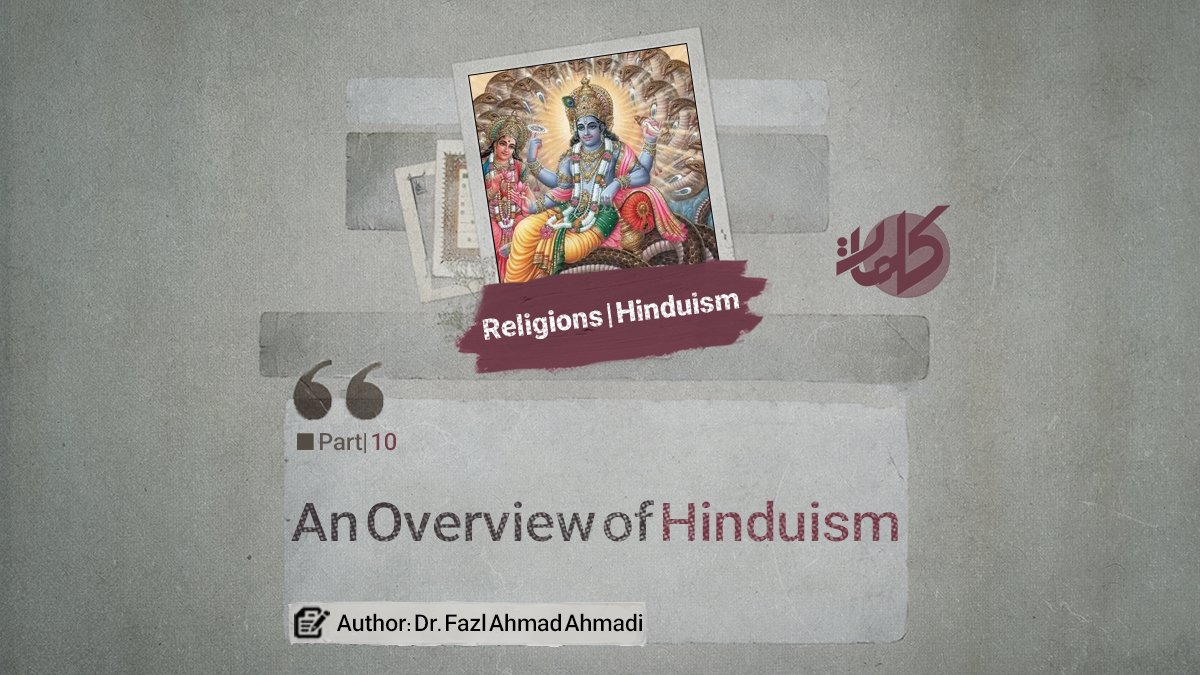
Author: Dr. Fazl Ahmad Ahmadi
An Overview of Hinduism (Part 10)
B. Brahmanical or Epic Period (600 BC to 200 AD)
The term “Brahmana” is one of the ambiguous words in Hinduism, derived from the name “Brahman.” It refers to prayer and, more specifically, to the power embedded in Vedic and magical mantras. Additionally, this term designates a person who performs these prayers.
The Brahmanical period, marked by a form of pluralism and religious diversity within Hinduism, coincided with the emergence of Buddhism, Jainism, and Vaishnavism. During this time, the Brahmins began to adopt extreme positions, focusing on their own interests. This led to a reaction against the dominance of the Brahmin class, resulting in the development of new rational methods that opposed the teachings of the Vedas and the Upanishads. Notably, the Bhagavad Gita and the epic Mahabharata emerged during this period.
Many Orientalists regard the Brahmanical period as a critical stage in the development of Hinduism, which they identify as the second stage of Indian philosophy and religious evolution. Distinct features of this period include a defined “system of Vedic thinking” and signs of religious decline. The “Miloue” theory suggests that the Brahmanical period began between the 12th and 7th centuries BCE, while “Moye Williams” places it between the 8th and 7th centuries BCE. Regardless of the specific dates, the key point is that this period led to the systematization of Vedic thought and the emergence of branches of religion grounded in reason.
The Hindu Period (12th Century to Present)
This period has experienced many ups and downs, culminating in a transformation that can be recognized as the Hindu period. According to Moye, “This period represents a degenerate Brahmanism, manifesting as various forms of divinity and numerous divine incarnations. It has been imprinted on the minds of the common people as social laws and local superstitions. Consequently, this period reflects a fragmented and confused collection of religious beliefs and customs that, despite their common origins, defy clear definition.”
The transition from the Brahmanical to the Hindu period is a major focus in Hindu studies. However, there is no consensus on the timing of this transformation. Some Orientalists, including Masen Ursel, argue that it occurred in the 11th century, while Glasnap suggests the 8th century. Despite the differing opinions, a common acknowledgment is that there has been notable development and evolution within Hinduism throughout the centuries. Conversely, many Hindus do not endorse the principle of historical evolution and generally exhibit indifference to historical events. This creates a conceptual rift between the perspectives of Orientalists and Hindu thinkers.
Sub-Periods
A. The Period of the Sutras
Some authors exclude this period from the fundamental periods of Hinduism, resulting in differing opinions regarding its exact timeline. According to some scholars, the period of the Sutras began in the second century CE, when philosophical and mystical ideas were documented in verse and short aphorisms. A defining characteristic of this period is the concise articulation of religious concepts. During this time, six philosophical schools emerged: Vedanta, Vishishka, Yoga, Sankhya, and Mi Mansa.
B. The Scholastic Course
This period is recognized by a few authors as a distinct era in Hindu philosophy. Some researchers describe it as the last philosophical period in India, lasting until the 15th century CE. Traces of this period are still evident in contemporary Hindu practices and beliefs.
Continues…


